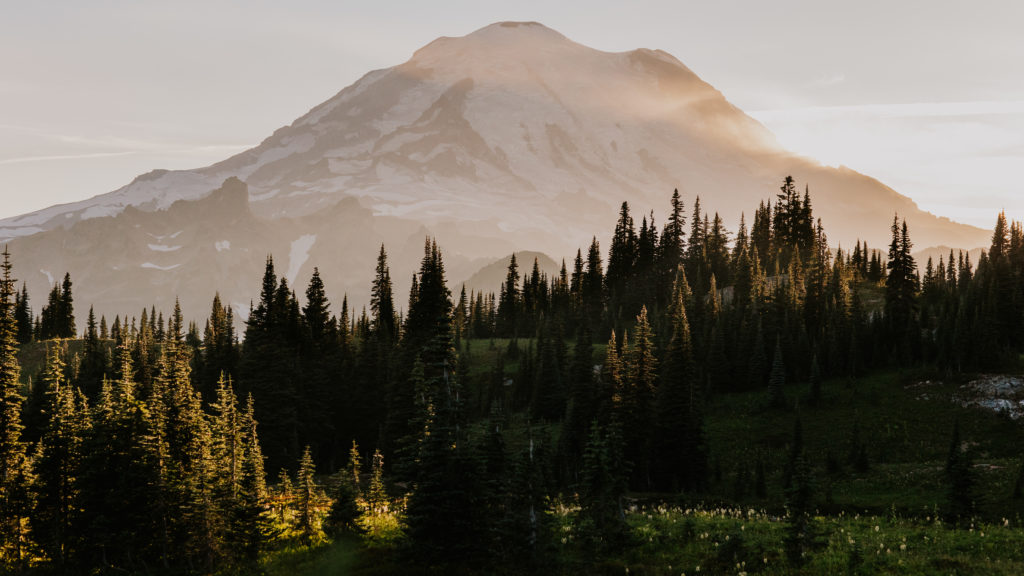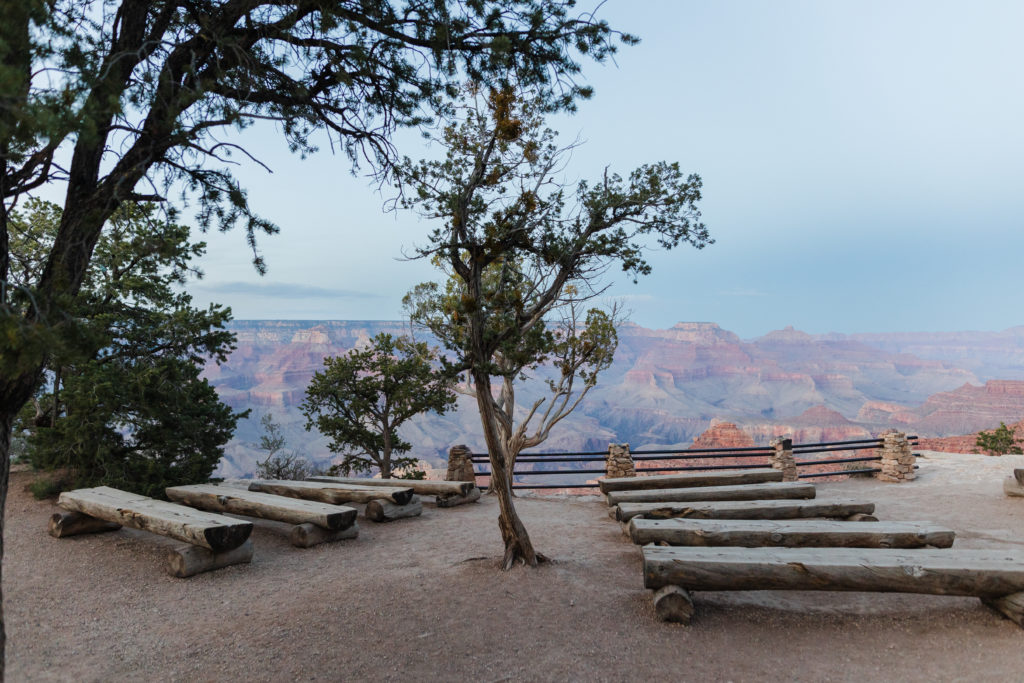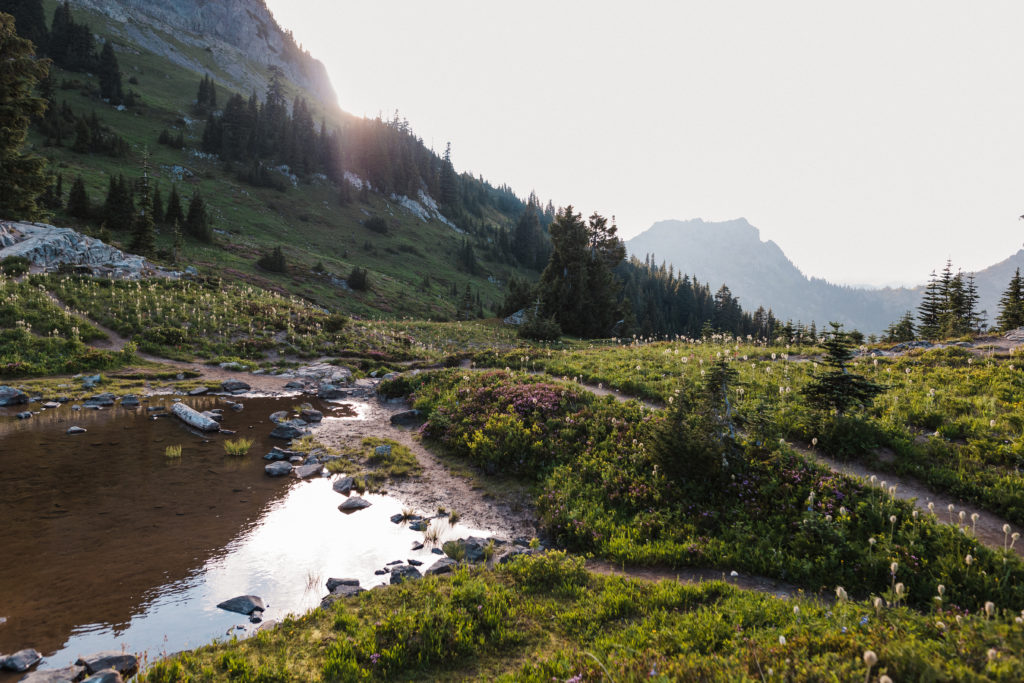
While getting married on public lands is growing ever more popular, it can still be tricky figuring out exactly what it takes to elope in a National Park. Eloping is a much simpler process than throwing a big traditional wedding, but there are unique rules, environmental factors and logistics to keep in mind when considering a wedding on public lands. Have no fear! We’ve answered some of our most frequently asked questions from couples who’ve asked us how to elope in a National Park.
Do I need a permit to elope in a national park?
Yes, most parks in the national park system require a “special use permit” to elope in a national park. The cost and ease of acquiring these permits varies by park, but generally they need to be applied for several weeks to months in advance and cost anywhere from $50-500. Also remember that this cost does not always include the park entry fee.
How much does it cost to have a national park elopement?
This largely depends on how grand your vision for your elopement day is, but at a minimum you’ll need the special use permit from the park which can range from $50-500, a marriage license, entrance passes to the park, and in most states an officiant. A few states including Pennsylvania and Colorado allow you to cut out the officiant and self solemnize, but this is not the norm.
These are some of the most common vendors or expenses couples include on their elopement.
Flights/Travel
AirBnB/Hotel
Officiant
Photographer/Videographer
Wedding Attire
Florist
Hair & Makeup
We’d estimate most couples spend between $3,000-$15,000 on their dream all day elopement. Considering the average wedding cost in the U.S. easily hits $30,000+…that’s not bad! You can opt for way less or way more when it comes to hiring vendors or buying items for your elopement. The only thing you really need is yourselves…this is part of the freedom of ditching traditional wedding norms! You can also make things “official” outside of the park in order to save on special use fees, or stick to a symbolic celebration, completely saving the legal side for back home.
How many guests can we bring along?
Because of the impact large groups leave on the land, and the experience of other park visitors, we strongly encourage couples to limit their guest count to no more than 10 people total (that’s including your vendors). There are many spots that can facilitate larger groups, but these are typically heavily trafficked areas and subject to specific rules regarding where you can and cannot go. It may be harder to secure your permit when other couples may be applying for the exact same spot because it’s the only one that works for their group size. The best way to include more than 10 guests in your day, is to book a private ceremony venue or reception space so you can have control and privacy while minimizing the impact on public lands.
How do I get a special use permit?
When applying for a permit to elope in a national park it’s important to give ample time for the park to process your request. In most cases this means at least 3 weeks to a year in advance, depending on the park. In any case it’s always best to give as much lead time as possible because some parks have designated ceremony sites that can book out a year in advance. Additionally, some parks have gotten so popular with elopements that they’ve had to switch to a lottery system to accept applications. Many sometimes come with an application fee with no guarantee of approval so proceed at your own risk. To learn the processes involved at each individual park, it’s best to visit nps.gov to find contact info for the park office of your desired park and talk to a ranger. They’re invariably super helpful for guiding you in the right direction. If you describe your plans for the day, and your preferred location, they can let you know what’s possible.
Are there restrictions for eloping in national parks?
The priority of the park service re: weddings is to practice Leave No Trace guidelines and respect the land and other visitors at the park. The park office will let you know of any specific restrictions at your chosen location. The most common rules include: Restrictions on setting up structures (such as arches), guest limits, or only approving ceremonies on weekdays to avoid disrupting busy weekends. Certain areas restrict the use of live florals to prevent spreading non-native seeds. It’s super important to respect and follow any rules or restrictions the park sets in place, as this keeps public lands available for use in the future. It’s becoming all too common for certain parks or locations to be shut down to wedding ceremonies completely because of past bad experiences. Let’s keep these spaces beautiful and accesible for everyone in the future!

Are there designated ceremony locations in a national park?
While not the case in every park, many of the parks designate locations that allow and can accommodate wedding ceremonies within the park. Many of these are designated for wedding ceremonies with guests. Generally the ceremony locations on offer will not be at the most popular attractions at the park that are in high demand for all the other folks trying to see the park. (Old Faithful at Yellowstone NP, Cadillac Mountain at Acadia NP, or Fern Canyon in Redwoods NP, for example). Some may be at simple, paved overlooks where there is less risk of stepping off trail and trampling sensitive plantlife. The restrictions in many cases are far more relaxed for smaller groups of 10 people or less, so consider your guest list when choosing your ceremony location. For information on what locations are offered and the latest guidelines at your park of choice, head to NPS.gov and give a call to the park office to speak to a ranger for help. In many cases, if you choose to elope with no guests, it’s much easier to pick a ceremony location with more freedom!
How long should we plan for photo coverage?
As a general rule, 4-6 hours at a minimum to cover a first look (if you plan on having one), the ceremony, family photos (for intimate weddings), and sunrise/sunset portraits. If there is any hiking or adventurous activity involved, it’s important to factor in time to reach your destination with plenty of time built in to rest, snack, hydrate, and just enjoy the amazing adventure you’ve planned together! Even on a more leisurely elopement day…there are so many moments beyond just the ceremony and portrait time that you’re going to love having photographs to look back on. We truly don’t believe in cramming the full story of your day into just a few hours…the full scope of your day deserves to be captured just as much as any traditional wedding day. We frequently spend 8 to 10 hours documenting our couples’ day from beginning to end.
What time of day should I plan for photos?
Sunset and sunrise are the absolute best time to plan your portrait sessions. The golden light leads to truly outstanding photos of both yourselves and the beautiful environment around you in ways that mid day light simply cannot. Choosing between sunset and sunrise largely depends on your vision for the day and the location you’re planning on taking your photos. Most trails and locations have an ideal time of day or even time of year when the light is at it’s absolute best, and talking to an experienced elopement photographer/planner will help shed light (no pun intended) on the best time for your chosen place. If you know mornings are NOT your thing, don’t push yourselves to elope at sunrise if you know you won’t be able to fully enjoy the moment. Ease into your day and plan for your celebration to continue into the evening. If you’d prefer to avoid crowds as much as possible, sunrise is a sure way to beat the bulk of other visitors in the parks!

What’s the best time of year for eloping in a national park?
This largely depends once again on where you’re planning on eloping and what you plan on doing. Certain parks most definitely have their peak season. Mount Rainier National Park for instance is very limited as to what you can access in the winter months before the snow melts and the roads are cleared. In that case, the months from summer to early autumn when everything is in full bloom are the absolute best time to visit. But other parks have a wider window to visit with different experiences to be had in each season. Nearby Olympic National Park is truly epic in the summertime, but visiting its iconic hurricane ridge for a snowy elopement day experience could be more what you’re after. Snowshoeing across the olympic mountain range with your favorite person is an experience reserved exclusively for those visiting in winter. In general, the best practice is to imagine your perfect day and what it entails, then work backward from there to find the location and time of year that can accommodate that best, taking into account trail and road closures, weather conditions and seasonal crowds.
It’s pretty easy to find out when peak tourist visitation begins in any given National Park. Opting to elope right before or right after peak season will let you avoid the worst of the chaos, while still enjoying the ideal weather/temperature conditions that draw people there.
Definitely find out why tourism slows down in certain areas to make sure your location is still safe, accessible and pleasant if you visit off-season. High elevation locations may be closed to cars for most of the year, and desert areas may be incredibly hot or susceptible to flash flooding/monsoons in the summer. We don’t recommend putting yourself in an unsafe or unpleasant environment for the sake of saving on travel or avoiding other visitors.
Where should we stay for our national park elopement?
In our eyes there are four main ways to stay in comfort around the national parks. Firstly, there are the many gorgeous national park service campgrounds located inside the parks themselves. These are usually well maintained and in some of the best locations to camp you’ll find anywhere. In some cases the campgrounds can be first come, first serve, but it’s up to you if you feel like taking that risk.
Secondly, there are the many wonderful historic park lodges that sometimes date back nearly a century to the origins of the parks themselves. These will be pricier than the camping options, but if pure comfort and a desire to really treat yourselves for your wedding day are whats driving you, this may be the best option. As with the campsites, rooms at these lodges are in high demand and fill up quickly, so booking well ahead of time is paramount.
The third option holds a dear place in our hearts given our current lifestyle of choice: Van Life. There are some tremendous options for luxury camper van rentals these days, and when paired with the copious free camping options outside many of our parks, particularly in the western half of the country, this provides a truly unique and freeing alternative to the traditional accommodations.
Lastly, there are usually a bevy of super cute Airbnb options around the major national parks. Whether it’s an A-frame, cabin, yurt, treehouse, or just simply cozy place to rest up, airbnb probably has you covered. Any of these options would also be the perfect setting to document the “bookend” moments, such as getting ready, or settling in for a meal or campfire at the end of the night.
How to “Leave No Trace” during your National Park Elopement
You’ll hear about the 7 Principles of Leave No Trace pretty frequently around here, and all over the NPS websites. These easy to follow, common sense guidelines are the perfect recipe for success when spending time on public lands.
- Plan Ahead and Prepare
- Travel and Camp on Durable Surfaces
- Dispose of Waste Properly
- Leave What You Find
- Minimize Campfire Impacts
- Respect Wildlife
- Be Considerate of Other Visitors
For more specific tips and tricks for following these guidelines in our National Parks, we’ll direct you to this awesome breakdown via NPS.gov
Which National Parks Allow Elopements?
Almost all of them! However, with the rising popularity of elopements in the National Parks, some have implemented more strict rules on special use permits, and the rules seem to be ever-changing. It doesn’t hurt to reach out to the local park office directly before deciding on your location – They can give you the most accurate, up-to-date information. We’re constantly in contact with our most frequently visited parks, but we still check with them for every single couple just in case there are new rules to consider.
Is your head spinning a little? One of the biggest perks of hiring a specialized elopement photographer is getting hands on expert assistance navigating these waters. These are factors we would never expect every couple to know at the beginning of their planning journey, so we love getting to answer questions and help as much as needed!